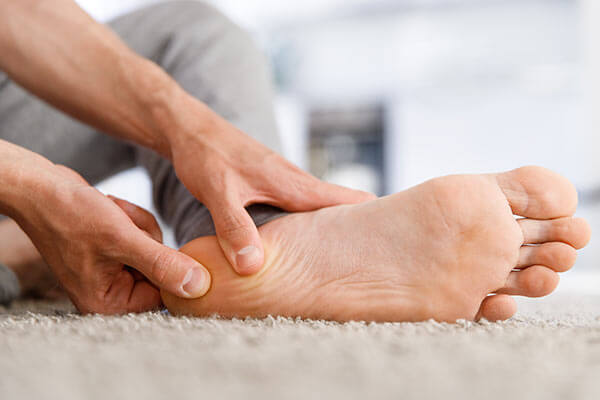Plantar Fasciitis Treatment Prospect
Heel discomfort can significantly impact your work life, exercise habits, and daily routines. Plantar fasciitis is one condition that might be contributing to this issue.


What is Plantar Fasciitis?
The plantar fascia is a thick band of tissue along the bottom of the foot, running from the heel right to the toe. It forms the arch of your foot, making it absolutely essential to the successful and comfortable function of your foot. Plantar fasciitis refers to the inflammation of the plantar fascia, and causes heel pain that can become extremely severe.
Heel pain is the single most common injury that we see at the Adelaide Heel Pain Clinics. At our specialist clinic alone, we typically see about 50 cases per day of heel pain commonly labelled plantar fasciitis. This condition is clearly extremely common, but that doesn’t make it any less of a serious problem. This nasty condition needs swift treatment, especially since recent studies have shown that 50% of plantar fasciitis sufferers still had it after five years – and more than 45% still had it after ten! Nobody wants to be in pain for the next decade, so seeing a podiatrist as soon as possible is a must.
Symptoms of Plantar Fasciitis
The most noticeable sign of plantar fasciitis is usually heel discomfort. This pain, often linked with the condition, is frequently sharp and located at the bottom of the foot, close to the heel. Many patients report that their discomfort is most intense during the morning when they first walk after resting overnight. Likewise, this discomfort can intensify after prolonged periods of sitting or standing. Additional typical signs of plantar fasciitis might be discomfort in the sole of the foot, a tendency to limp, swelling, and sensitivity in the affected area.


What Causes Plantar Fasciitis
Plantar fasciitis typically arises from an overload of pressure and strain on the plantar fascia, leading to inflammation and discomfort in the heel. Often, this inflammation can stem from intense physical activities that place a burden on the heel, like dancing, running, or gymnastics. Contributing factors to the development of plantar fasciitis might include weight changes, the natural aging process, pregnancy, extended periods of standing, or foot structures such as flat feet or high arches.

Ultimate 7 Step Checklist to Heal Your Morning Heel Pain
Tired of Limping?
Book an Appointment to Treat Your Heel Pain Today!
Treatment of Plantar Fasciitis
At Adelaide Heel Pain Clinics, we see a wide range of plantar fasciitis cases each day, offering support to those dealing with heel discomfort. Our clinic is well-prepared with the experience and facilities needed to assist in managing heel discomfort, catering to a variety of severities and specific case requirements. Our ability to provide a diverse selection of treatment options means that we can develop a personalised treatment strategy to suit your individual circumstances.

Radial Shockwave Therapy
The use of radial shockwave therapy, characterised by its lack of long-term side effects and the absence of a recovery period, stands out as a significant treatment alternative. This therapy is often utilised in our practice to aid individuals experiencing different forms of heel pain.

Focal Shockwave Therapy
Our clinic in South Australia is unique in housing one of the few focal shockwave therapy machines in the country. This technique is considered to be at the forefront of approaches for addressing heel pain.

Dry Needling
Dry needling is highly regarded for its ability to release tight muscles. Through the use of small acupuncture needles, this technique allows us to target trigger points, assisting in the easing of muscle discomfort.

Orthotics
Custom orthotics can bring individualised comfort and support into any shoe you want to wear. With orthotics, you can receive a treatment option built entirely for your foot and your unique needs.

Low-Level Cold Laser
Low-level cold lasers offer a less discomforting alternative compared to hot lasers. Regarded as one of the innovative technologies in podiatry care, this might be a suitable choice for your needs.

Exercise Rehabilitation
Why not get a treatment plan designed entirely for you – your pain, your health, your goals. Working with a podiatrist on a custom exercise rehabilitation plan could offer wonderful benefits.
Your Plantar Fasciitis Questions Answered
Are plantar fasciitis and heel spurs the same?
What are the best shoes to wear for plantar fasciitis?
Should I still walk or run if I have plantar fasciitis?
Is plantar fasciitis genetic?
What does plantar fasciitis feel like?
When should I see a podiatrist for plantar fasciitis?
Do compression socks help with plantar fasciitis?
Why does plantar fasciitis hurt more in the morning?

Book Online in less than 60 Seconds
Join over 20,000 South Australians who are now pain free!
